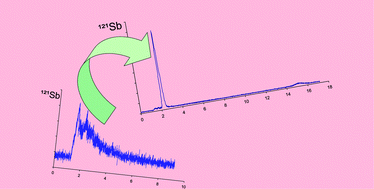Quantitative HPLC-ICP-MS analysis of antimonyredox speciation in complex sample matrices: new insights into the Sb-chemistry causing poor chromatographic recoveries†
Abstract
In solution

* Corresponding authors
a
University of Copenhagen, Department of Pharmaceutics and Analytical Chemistry, Universitetsparken 2, Copenhagen Ø, Denmark
E-mail:
clha@farma.ku.dk
Fax: +45 3533 6010
Tel: +45 3533 6420
b Technical University of Denmark, National Food Institute, Mørkhøj Bygade 19, Søborg, Denmark
In solution

 Please wait while we load your content...
Something went wrong. Try again?
Please wait while we load your content...
Something went wrong. Try again?
C. Hansen, B. Schmidt, E. H. Larsen, B. Gammelgaard, S. Stürup and H. R. Hansen, Analyst, 2011, 136, 996 DOI: 10.1039/C0AN00796J
To request permission to reproduce material from this article, please go to the Copyright Clearance Center request page.
If you are an author contributing to an RSC publication, you do not need to request permission provided correct acknowledgement is given.
If you are the author of this article, you do not need to request permission to reproduce figures and diagrams provided correct acknowledgement is given. If you want to reproduce the whole article in a third-party publication (excluding your thesis/dissertation for which permission is not required) please go to the Copyright Clearance Center request page.
Read more about how to correctly acknowledge RSC content.
 Fetching data from CrossRef.
Fetching data from CrossRef.
This may take some time to load.
Loading related content
